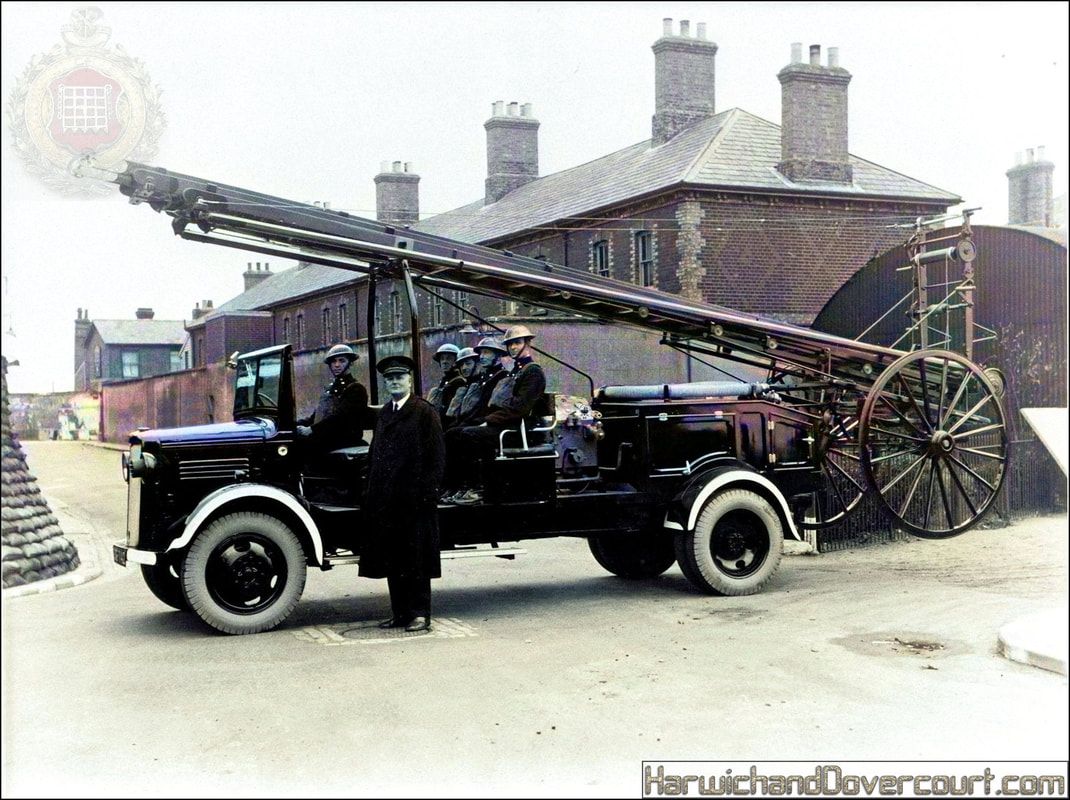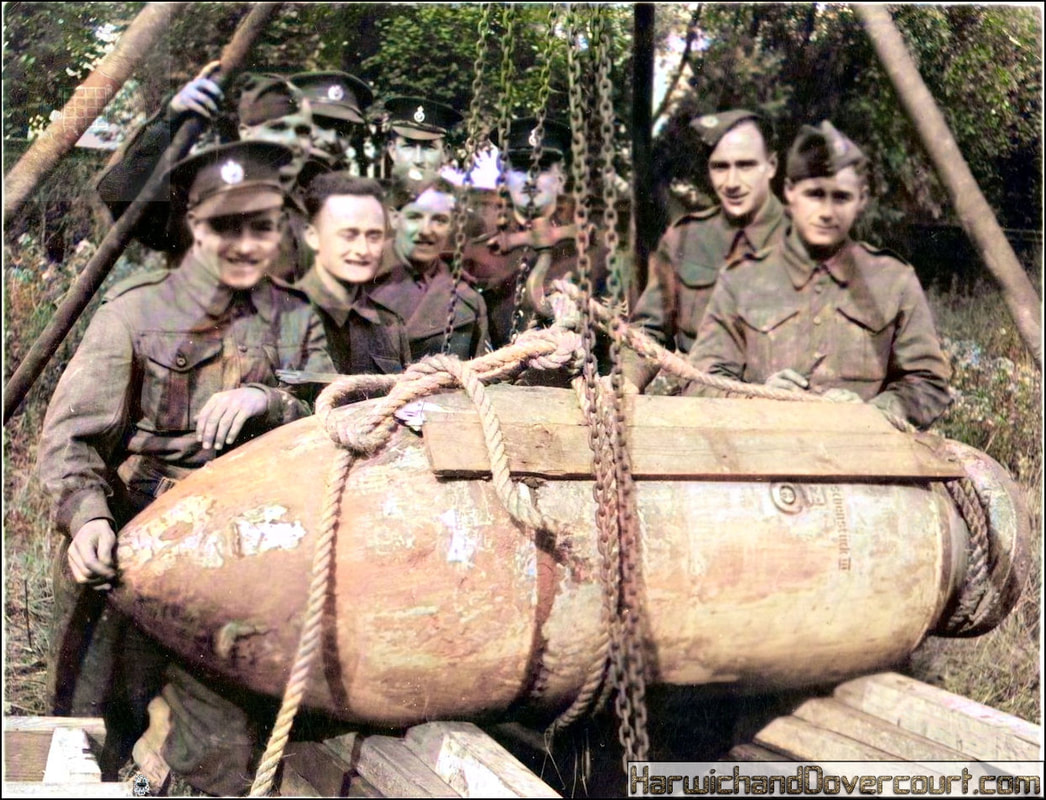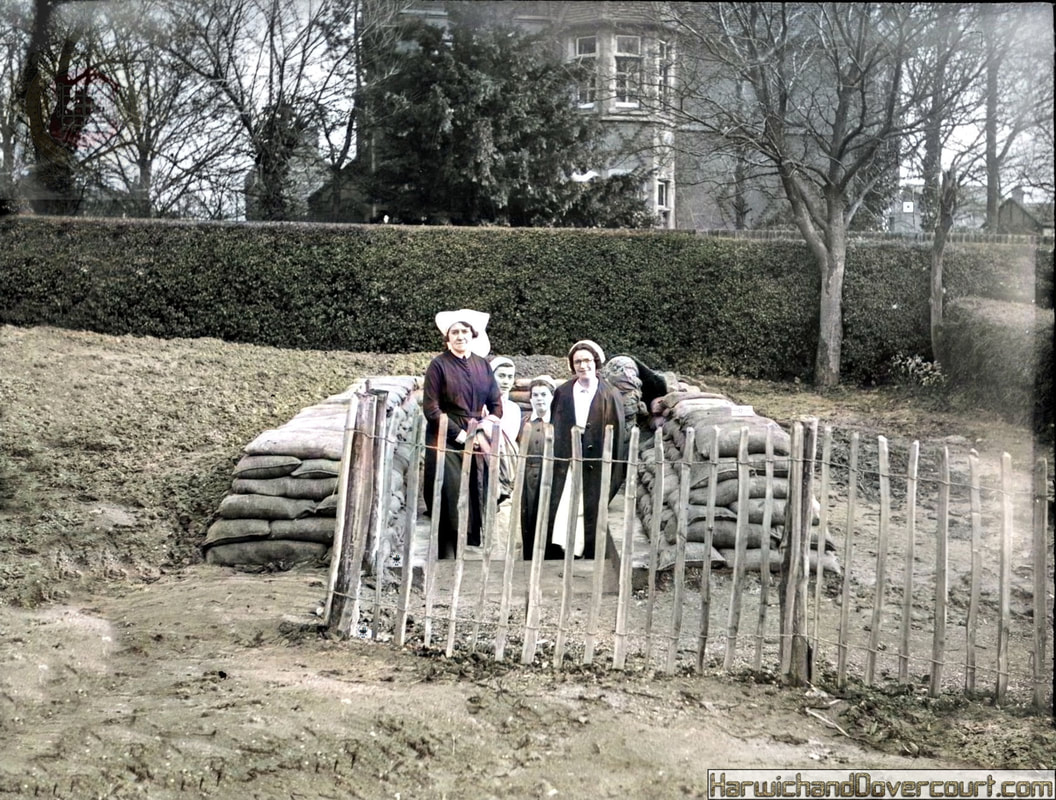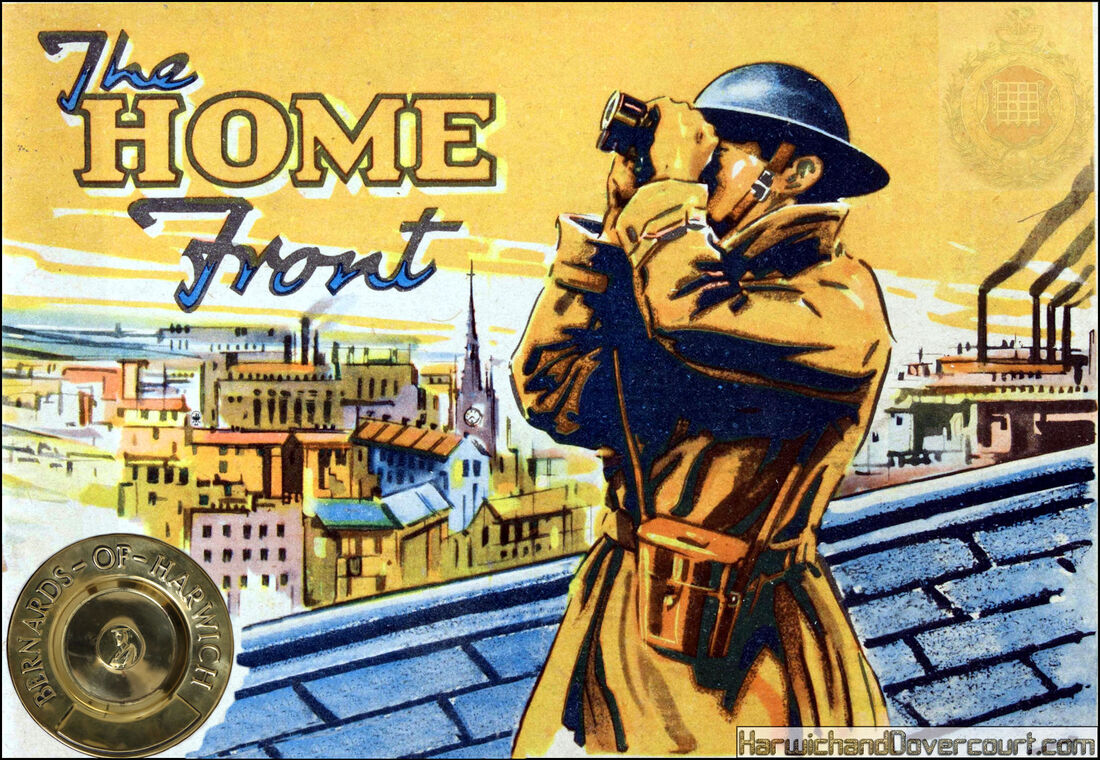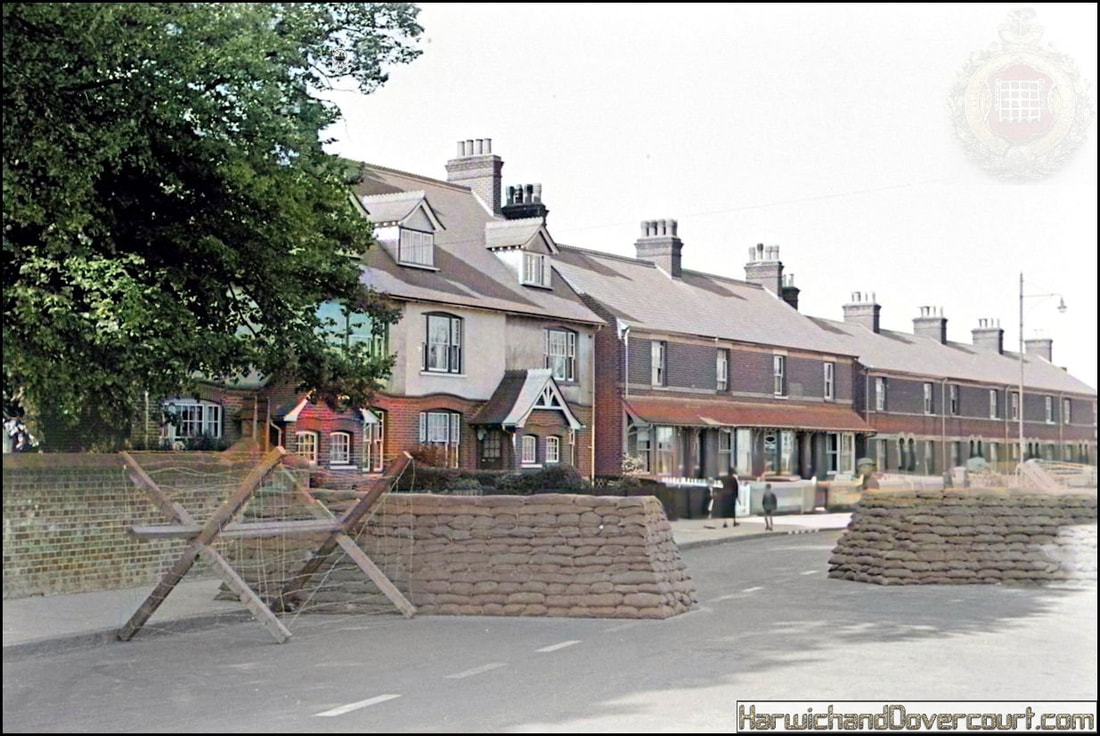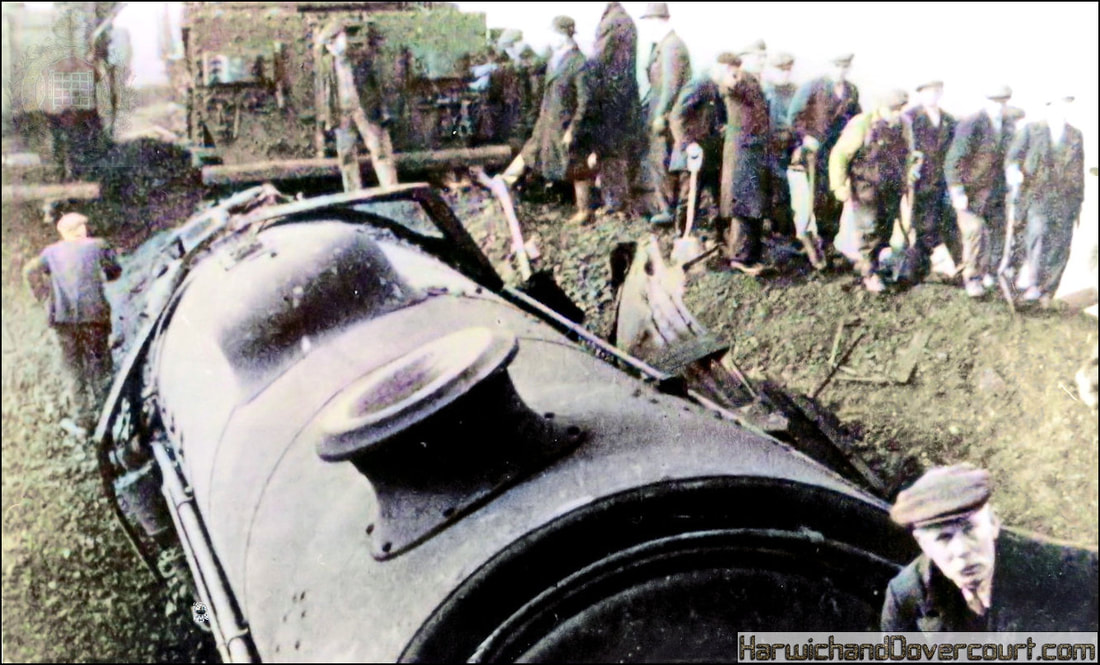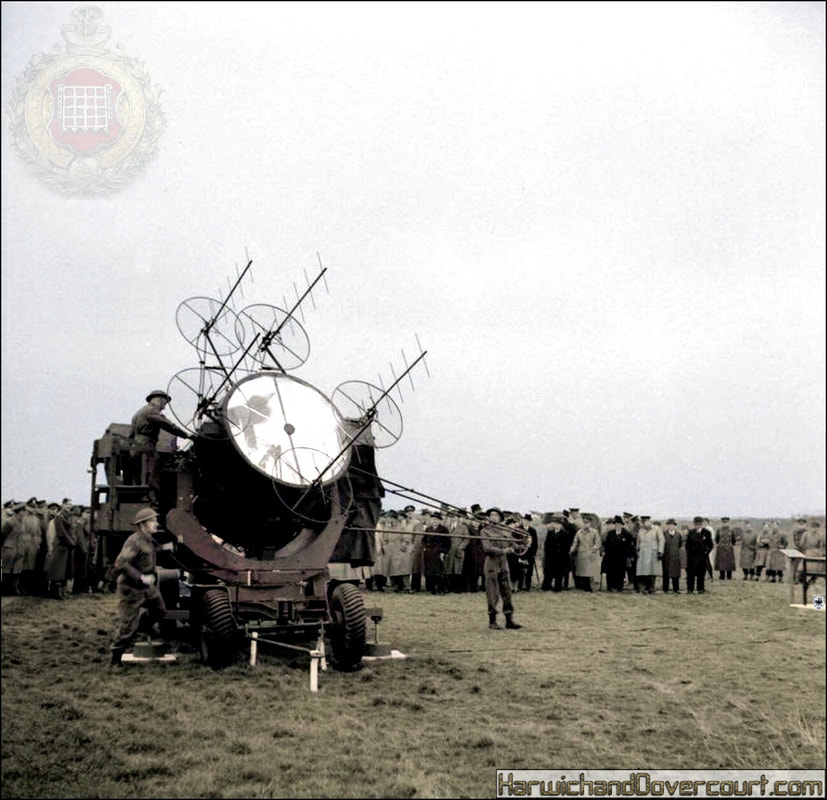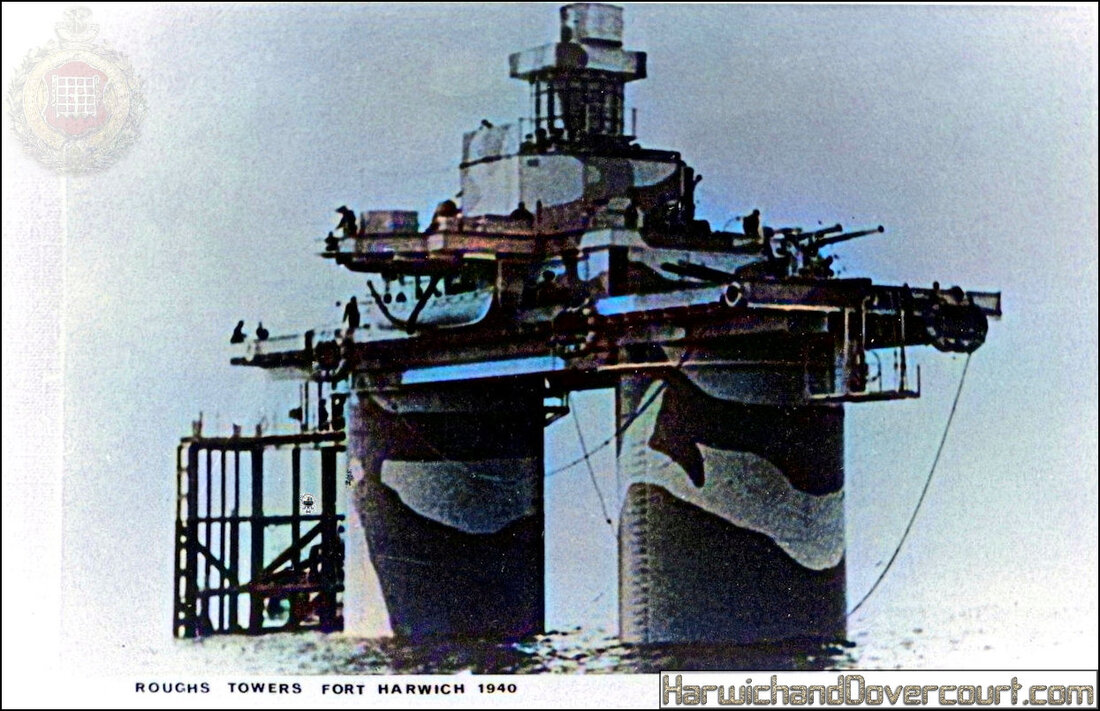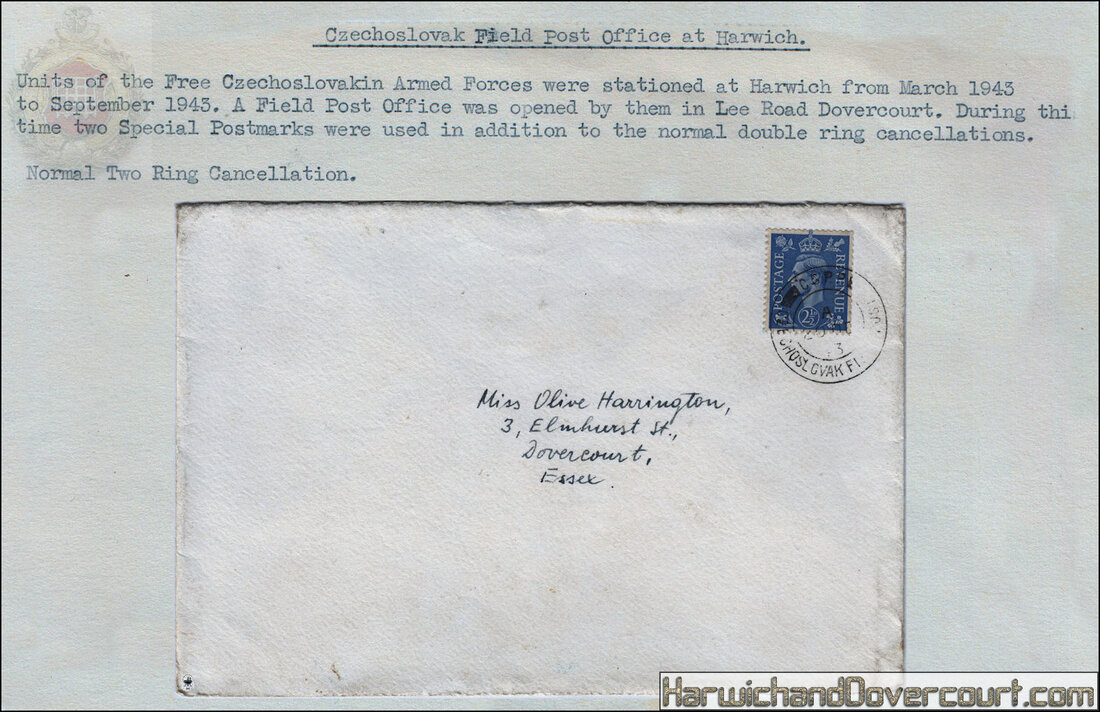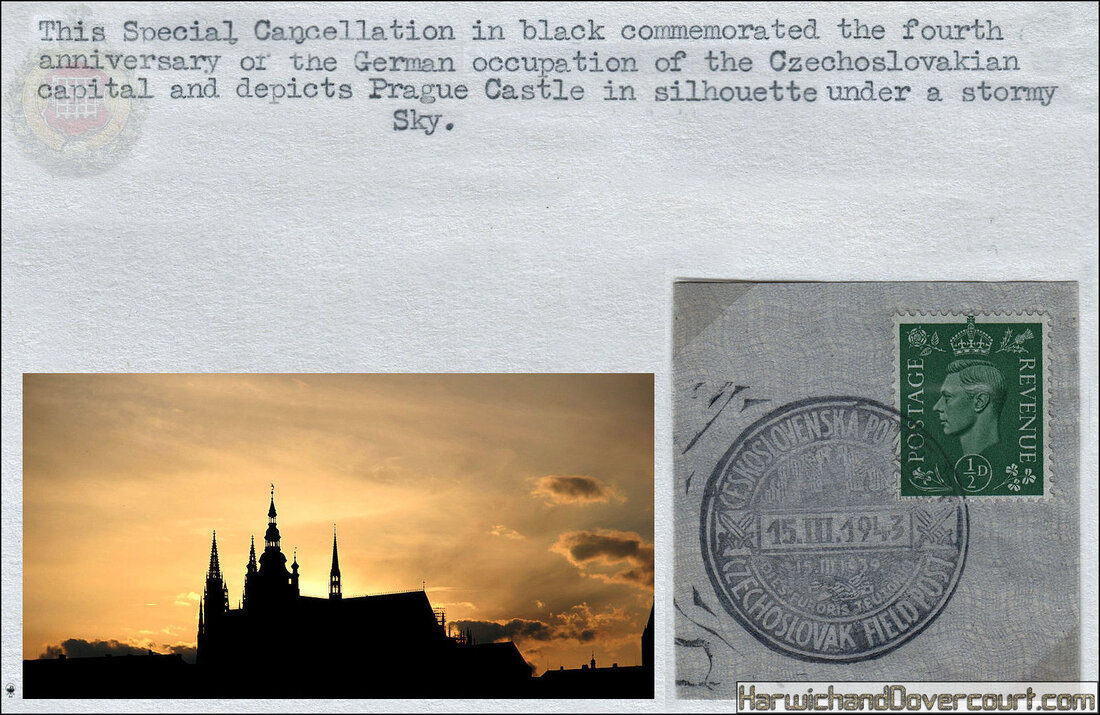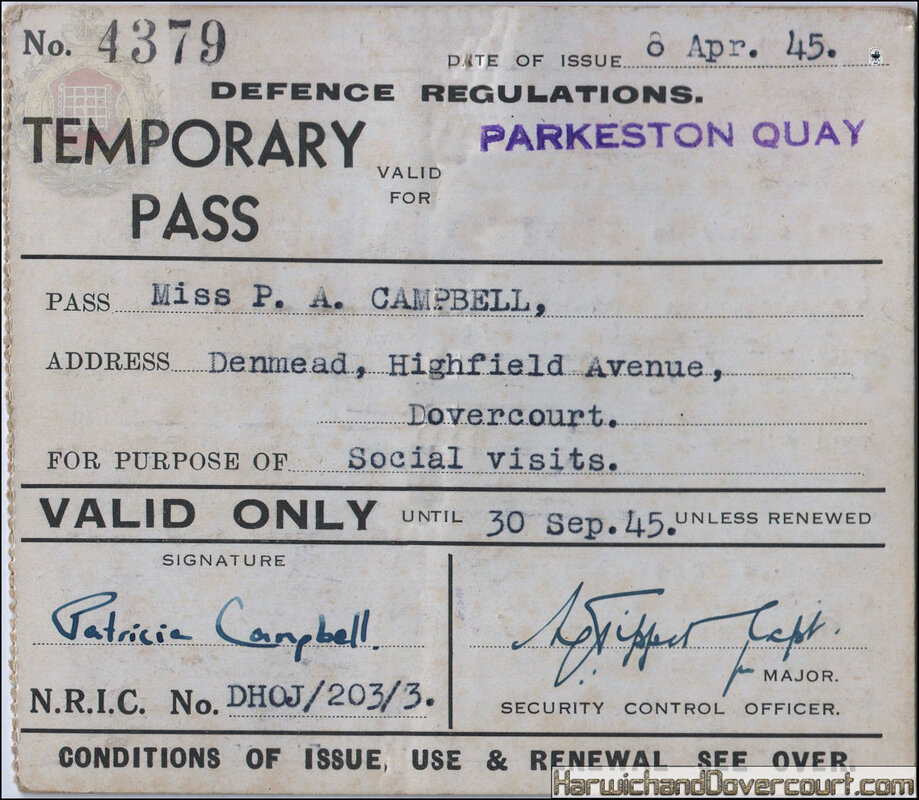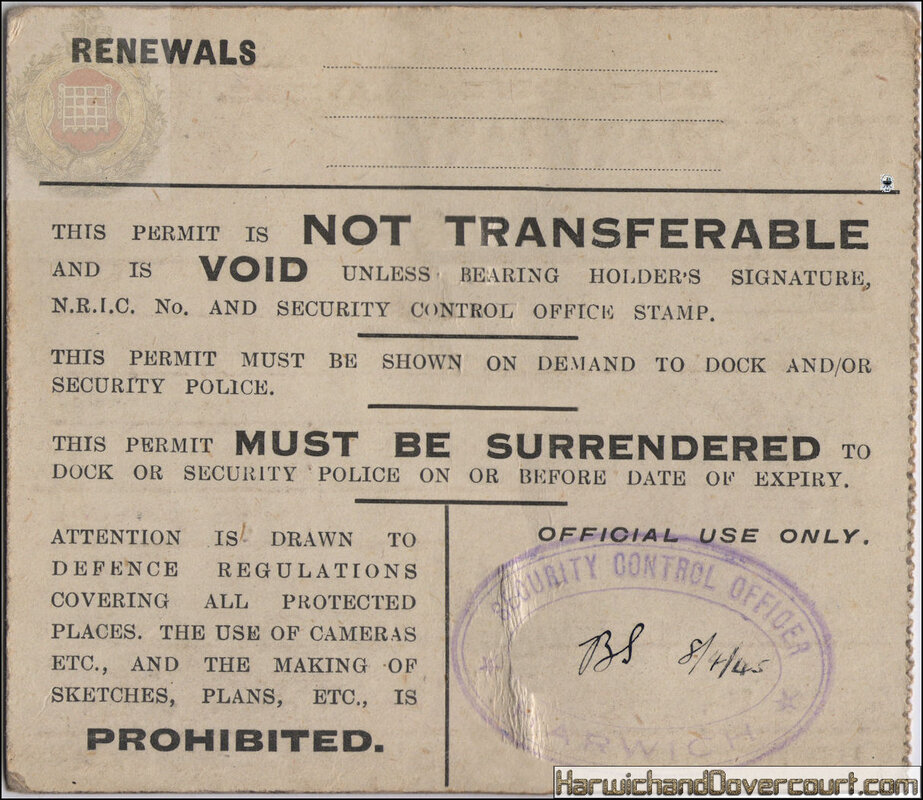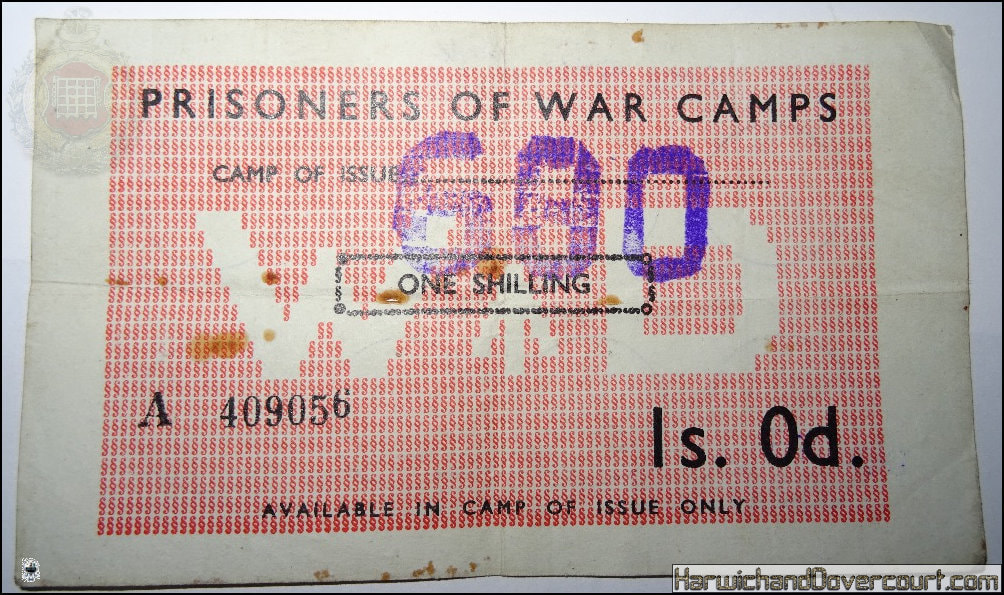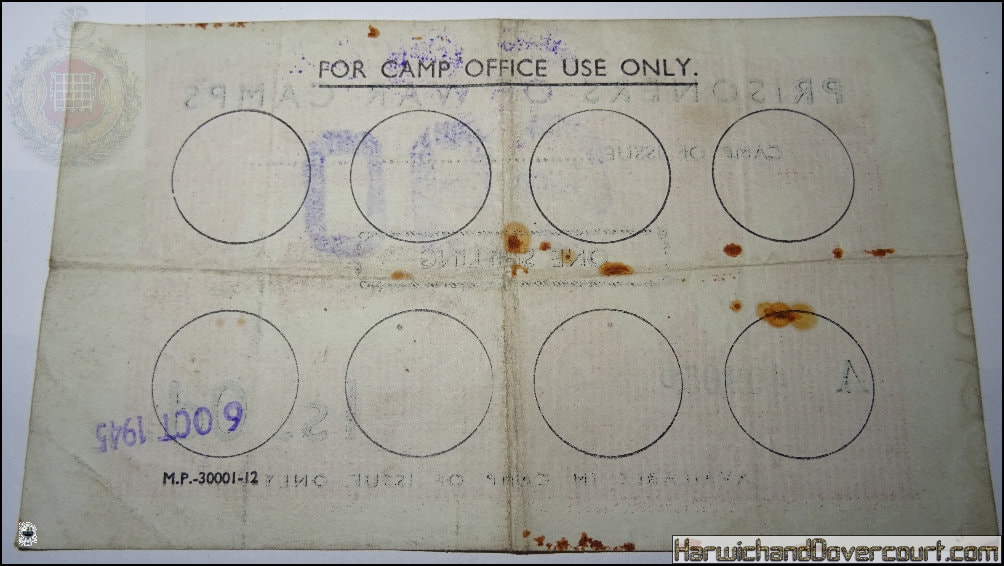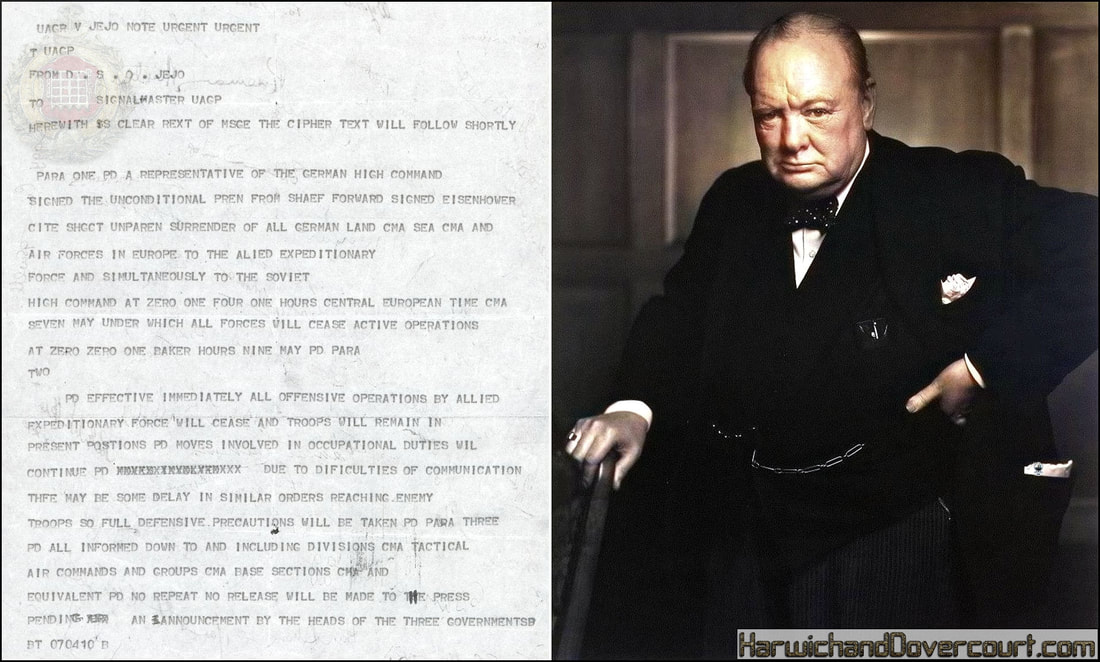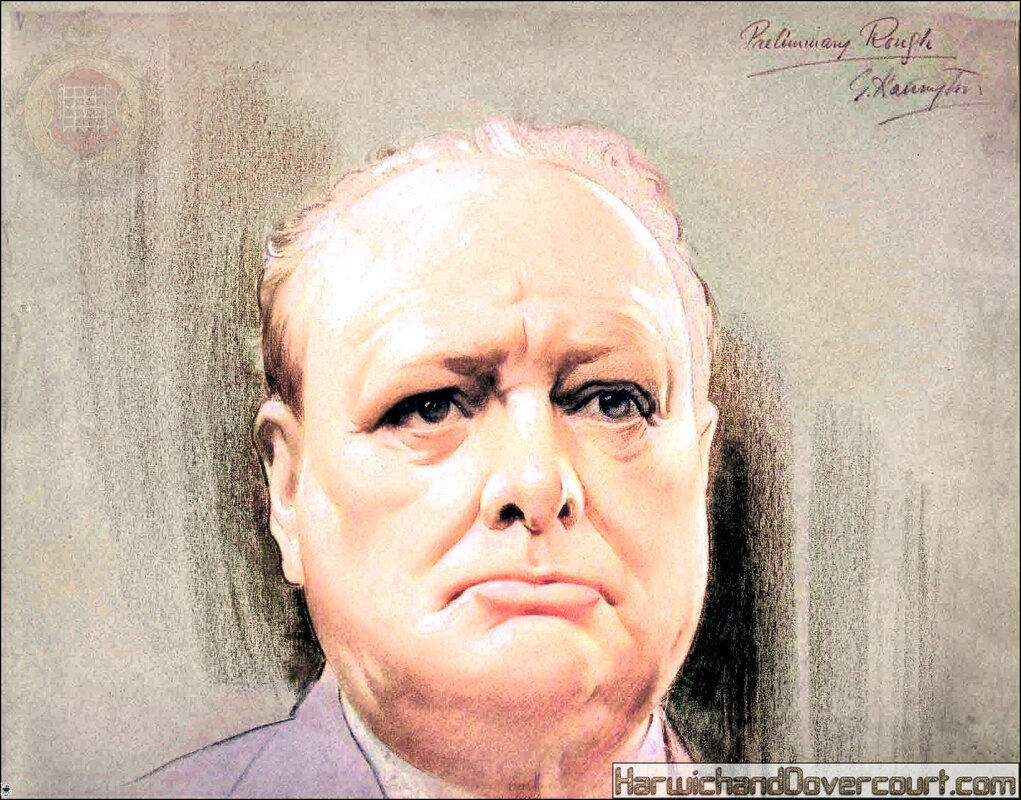Section 1 ~ From The Left
01 A.F.S. Wellington Road, Harwich (1940) H&D FW
02 A.R.P. & Fireman in Milton Road, Dovercourt Bay, Essex H&D (1940) H&D FW ~
Orwell Terrace is in the background.
03 Bomb Disposal Unit, Dovercourt (1940) Saunders H&D FW
This original photo shows heroic British soldiers around an unexploded German "SC1000" bomb, taken at Dovercourt (possibly in the park, with Orwell Terrace behind, but no location can be given, due to censorship during the war) the Image was produced by J.A. Saunders, photographers at Dovercourt Bay. These incredibly brave souls would have worked on the UXB to make it safe to move and finally dispose of.
The SC 1000 was a large air-dropped general-purpose thin-cased high explosive demolition bomb used by Germany during World War II. Weighing more than 1,000 kg, it was nicknamed the "Hermann" by the Germans in reference to the portly Luftwaffe commander, Hermann Göring.
The SC 1000 was a large air-dropped general-purpose thin-cased high explosive demolition bomb used by Germany during World War II. Weighing more than 1,000 kg, it was nicknamed the "Hermann" by the Germans in reference to the portly Luftwaffe commander, Hermann Göring.
04 Fryatt Memorial Hospital, Dovercourt I (1939) H&D FW
05 Fryatt Memorial Hospital Garden Bunker, Dovercourt (1939) H&D FW
06 Harwich Comfort Fund (1940) J.A.Saunders H&D FW ~
~ The mayor's fund raising charity for the Army, Navy, Airforce & Minesweepers ~
07 The Home Front at Bernards, Harwich (1939) H&D F2
08 Upper Dovercourt, Essex Check Point I (1939) H&D FW
Anti-invasion road barricades at Upper Dovercourt, Harwich, Essex (1940)
A timely reminder of more worrying times at Dovercourt in 1940, these roadblocks were erected in preparation for anti-invasion tactics during the Second World War, which entailed a large-scale division of military and civilian mobilisation in response to the threat of invasion (Operation Sea Lion) by German armed forces in 1940 and 1941.
The British Army needed to recover from the defeat of the British Expeditionary Force in France, and 1.5 million men were enrolled as part-time soldiers in the Home Guard. The rapid construction of field fortifications transformed much of the United Kingdom, especially southern England, into a prepared battlefield.
Sea Lion was never taken beyond the preliminary assembly of forces.
Today, little remains of Britain's anti-invasion preparations; only reinforced concrete structures such as pillboxes and anti-tank cubes are commonly found.
A timely reminder of more worrying times at Dovercourt in 1940, these roadblocks were erected in preparation for anti-invasion tactics during the Second World War, which entailed a large-scale division of military and civilian mobilisation in response to the threat of invasion (Operation Sea Lion) by German armed forces in 1940 and 1941.
The British Army needed to recover from the defeat of the British Expeditionary Force in France, and 1.5 million men were enrolled as part-time soldiers in the Home Guard. The rapid construction of field fortifications transformed much of the United Kingdom, especially southern England, into a prepared battlefield.
Sea Lion was never taken beyond the preliminary assembly of forces.
Today, little remains of Britain's anti-invasion preparations; only reinforced concrete structures such as pillboxes and anti-tank cubes are commonly found.
09 Upper Dovercourt, Essex Check Point II (1939) H&D FW
10 Luftwaffe Memorial Card (1940) H&D FW
11 Luftwaffe Memorial Card (1940) H&D RW
12 Liverpool St to Harwich train in Bomb Crater II (1943) H&D FW
Shenfield (March 3, 1943)
At around 9.10pm, a lone Focke Wulf 190 dropped its 250kg bomb onto the mainline railway and scored a direct hit upon the track about a mile north of Shenfield station.
The signalman instantly knew from his indications and the noise of the blast that likely damage had been sustained on the line and consequently held the 8.45pm Liverpool Street to Ipswich train in the platform, sending a p-way ganger out to investigate.
After around 15 minutes, the controller instructed the train to proceed along the line at caution and the train set off into the darkness.
Although the train was only travelling very slowly, at around 9.50pm it passed the horrified ganger who watched the engine plunge into the deep bomb crater.
The momentum of the tender and coaches catapulted them over the engine, burying it in coal and wreckage.
Being wartime, the death toll was not generally revealed, but the bodies of the driver (William Greenfield) and firemen (Arthur Barrett) were not recovered for some considerable time, after all the wreckage and coal had been removed.
Official records, held in The National Archives, give details of the accident involving a class B12/3 4-6-0 locomotive, No 8580: "A very nasty incident on 3rd March 1943 occurred near Ingatestone at 21.30, when the 20.45 Liverpool Street to Harwich Express Passenger train fell into a fresh crater, killing the driver and fireman and injuring the guard, another staff member and three passengers.
"Carriages had piled up behind the engine and much hard and intricate work was needed to clear up, not least getting the engine out of the crater.
"For 2½ days all trains had to be diverted via Broxbourne, Braintree and Witham, or Bury St Edmunds and Cambridge."
At around 9.10pm, a lone Focke Wulf 190 dropped its 250kg bomb onto the mainline railway and scored a direct hit upon the track about a mile north of Shenfield station.
The signalman instantly knew from his indications and the noise of the blast that likely damage had been sustained on the line and consequently held the 8.45pm Liverpool Street to Ipswich train in the platform, sending a p-way ganger out to investigate.
After around 15 minutes, the controller instructed the train to proceed along the line at caution and the train set off into the darkness.
Although the train was only travelling very slowly, at around 9.50pm it passed the horrified ganger who watched the engine plunge into the deep bomb crater.
The momentum of the tender and coaches catapulted them over the engine, burying it in coal and wreckage.
Being wartime, the death toll was not generally revealed, but the bodies of the driver (William Greenfield) and firemen (Arthur Barrett) were not recovered for some considerable time, after all the wreckage and coal had been removed.
Official records, held in The National Archives, give details of the accident involving a class B12/3 4-6-0 locomotive, No 8580: "A very nasty incident on 3rd March 1943 occurred near Ingatestone at 21.30, when the 20.45 Liverpool Street to Harwich Express Passenger train fell into a fresh crater, killing the driver and fireman and injuring the guard, another staff member and three passengers.
"Carriages had piled up behind the engine and much hard and intricate work was needed to clear up, not least getting the engine out of the crater.
"For 2½ days all trains had to be diverted via Broxbourne, Braintree and Witham, or Bury St Edmunds and Cambridge."
13 Liverpool St to Harwich train in Bomb Crater (1943) H&D FW
Picture 014
No. 554 A.A. Battery Near Harwich, Essex (1943) H&D F
16 Rough Towers Fort, Harwich (1940) H&D FW
17 Czechoslovak Field Post Office Dovercourt (1943) H&D FW
18 Czechoslovak Field Post Office Dovercourt II (1943) H&D FW
19 Defence Regulations Pass, Parkeston Quay, Harwich I (1945) H&D FW
20 Defence Regulations Pass, Parkeston Quay, Harwich II (1945) H&D FW
21 P.O.W. Camp at Dovercourt (Warners) Temporary Currency Note H&D FW
22 P.O.W. Camp at Dovercourt (Warners) Temporary Currency Note H&D FW
23 Churchill & Final German Surrender documentation (1945) H&D FW
World War II ended with the unconditional surrender of Germany in May 1945, but both May 8 and May 9 are celebrated as Victory in Europe Day (or V-E Day). This double celebration occurs because the Germans surrendered to the Western Allies, including Britain and the U.S., on May 8, and a separate surrender took place on May 9 in Russia.
In the East, the war ended when Japan surrendered unconditionally on Aug. 14, 1945, signing their surrender on Sept. 2. The Japanese surrender occurred after the United States dropped atomic bombs on Hiroshima and Nagasaki on Aug. 6 and 9, respectively. The date of the Japanese surrender is known as Victory Over Japan Day, or V-J Day.
In the East, the war ended when Japan surrendered unconditionally on Aug. 14, 1945, signing their surrender on Sept. 2. The Japanese surrender occurred after the United States dropped atomic bombs on Hiroshima and Nagasaki on Aug. 6 and 9, respectively. The date of the Japanese surrender is known as Victory Over Japan Day, or V-J Day.
